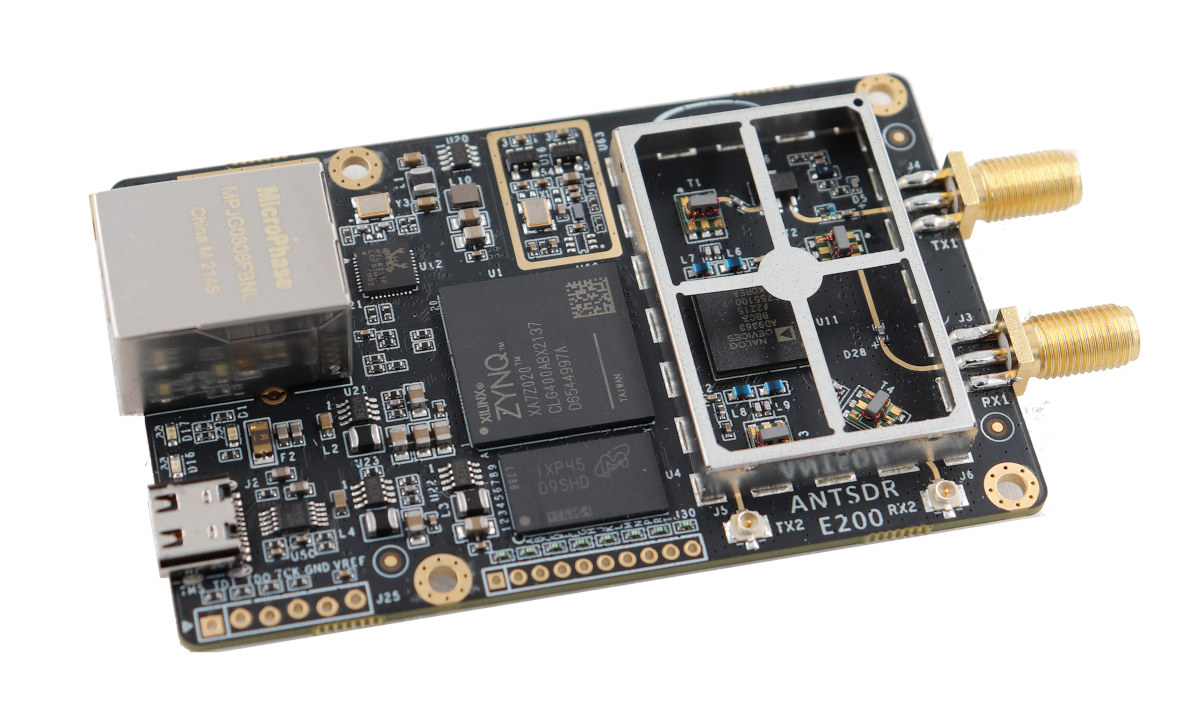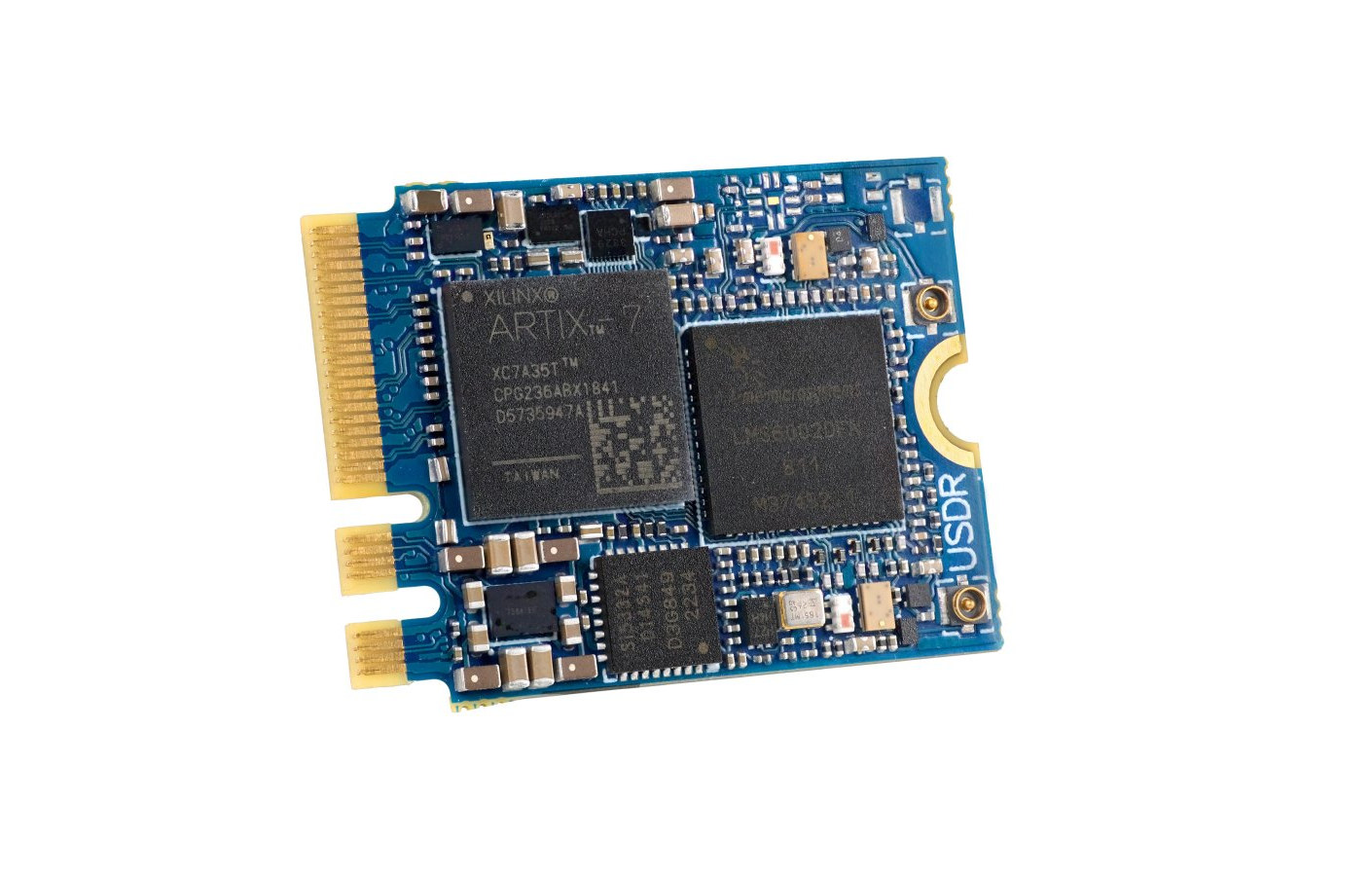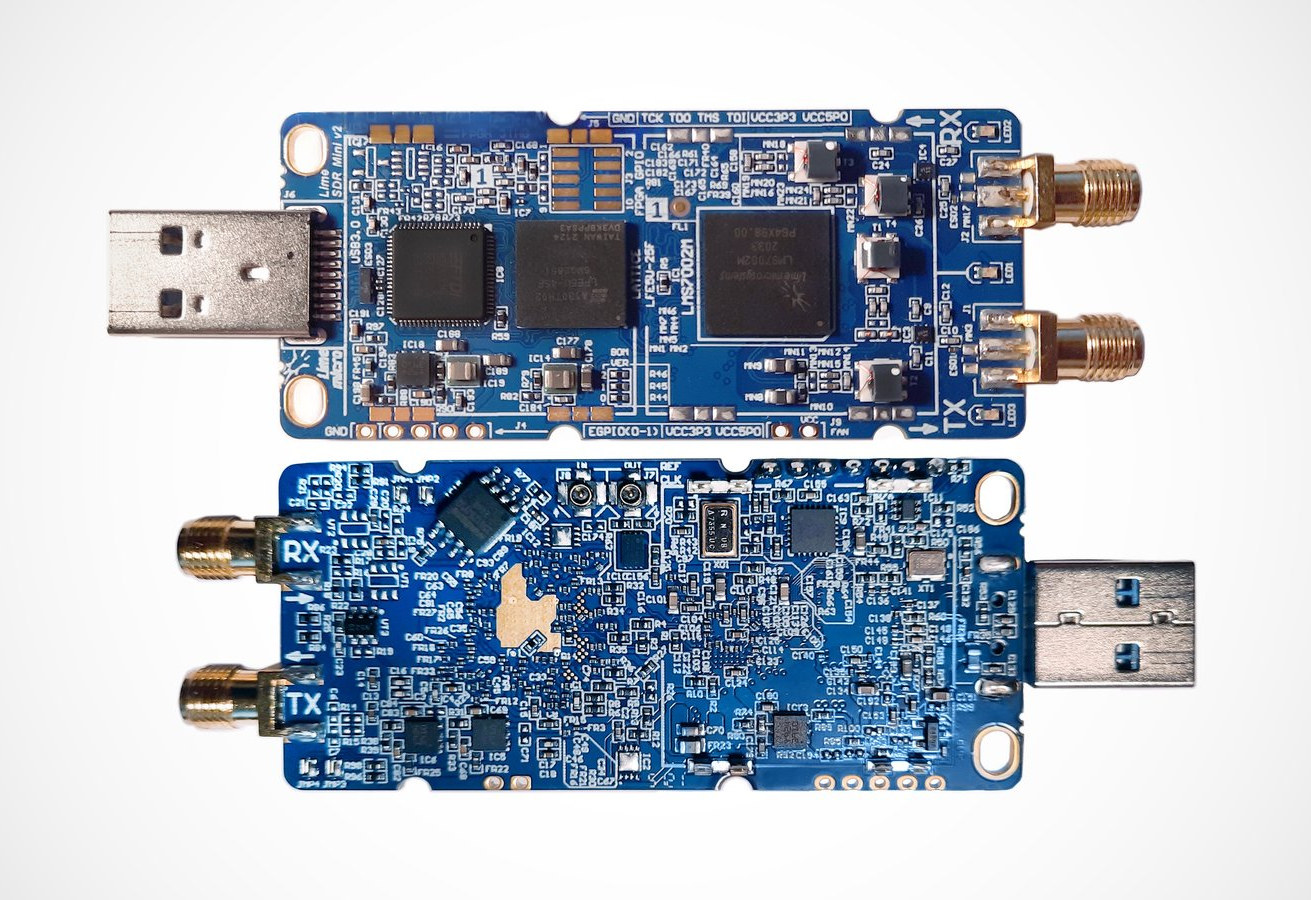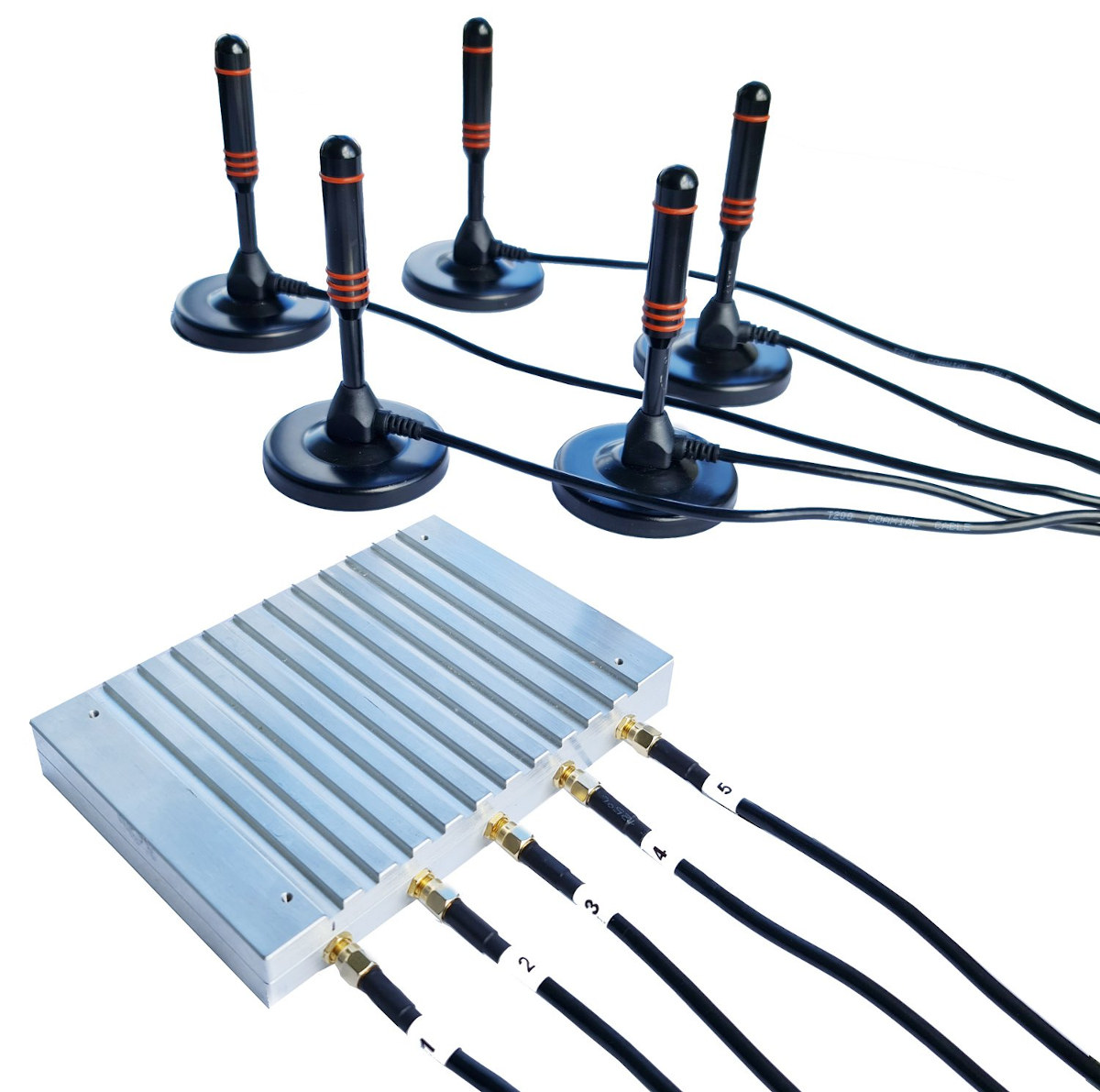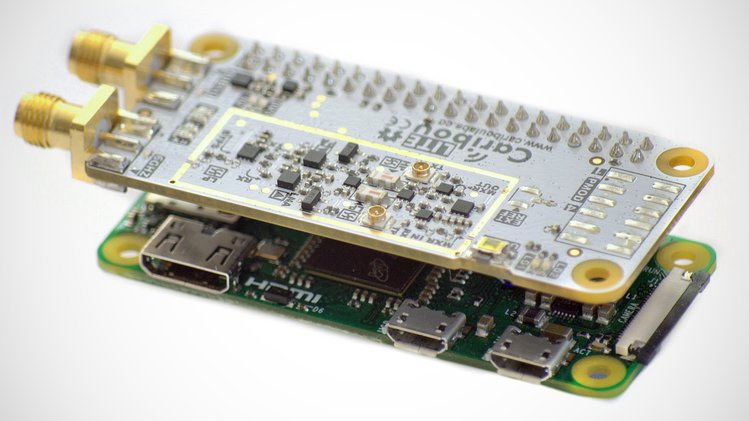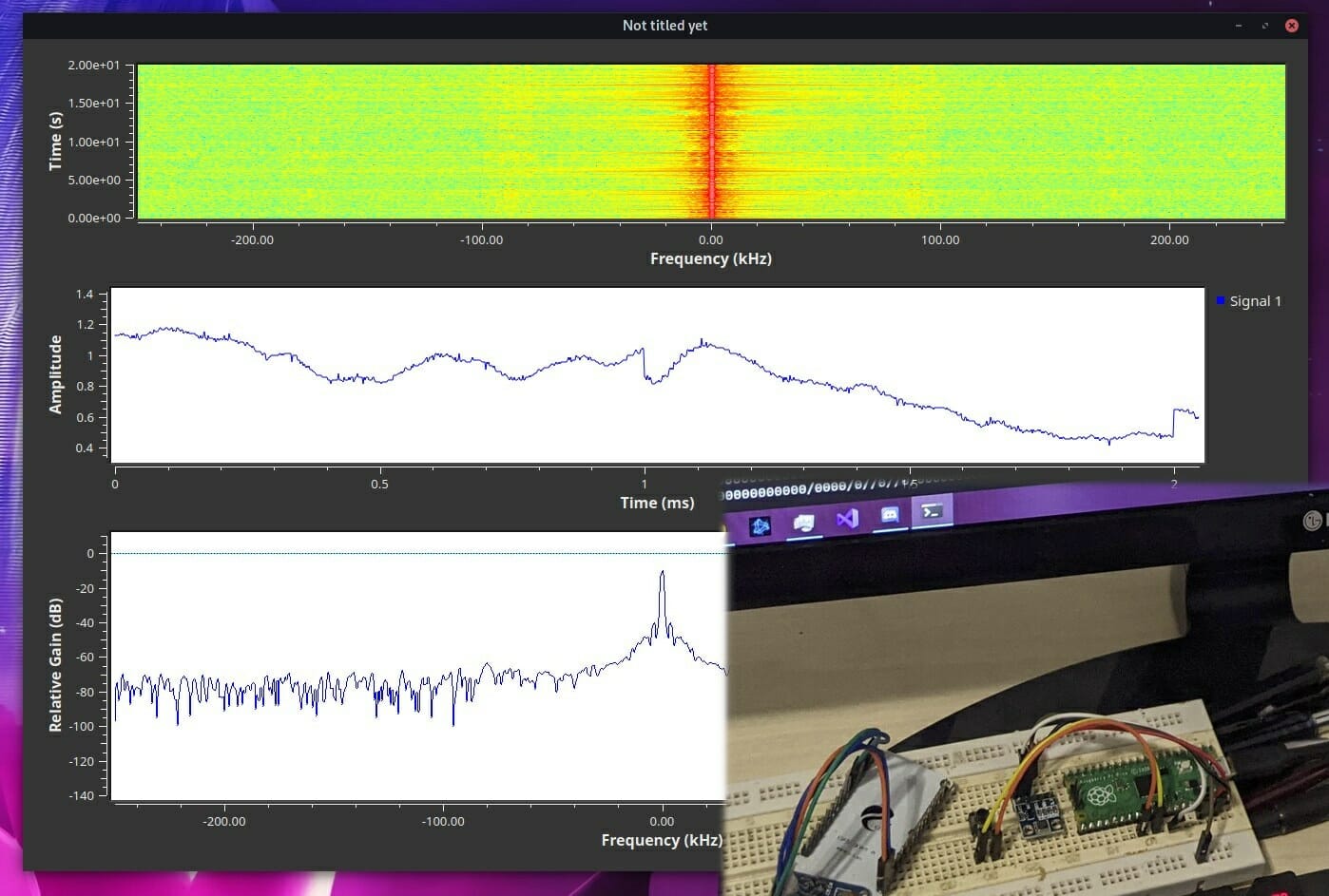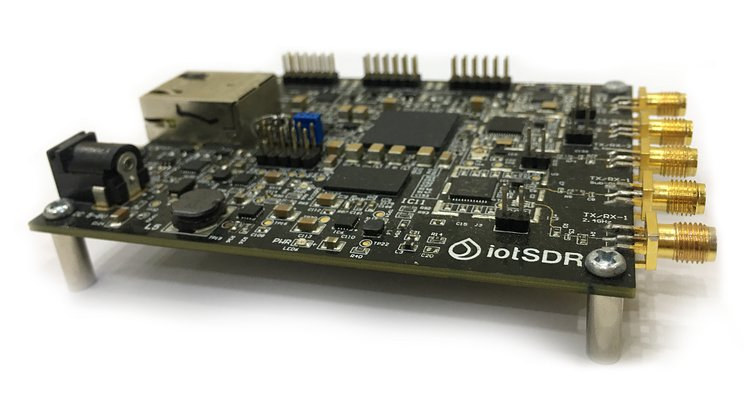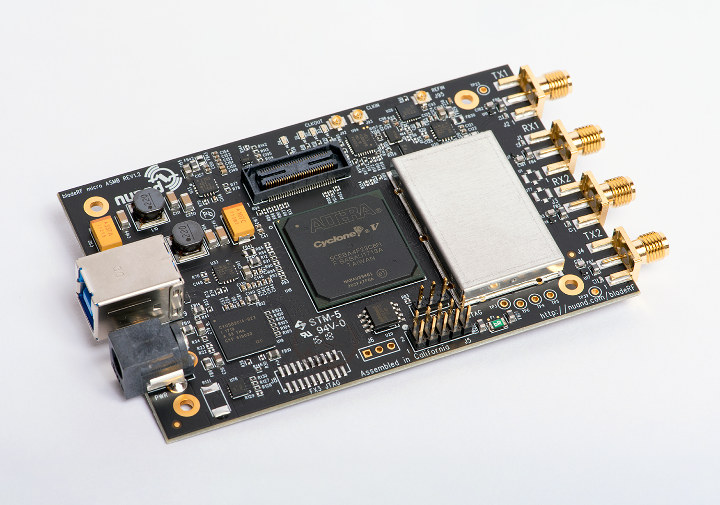We’ve just written about the uSDR M.2 SDR module on Crowd Supply, but it turns out the crowdfunding platform is hosting another SDR (Software-Defined Radio) project with the AntSDR E200 board equipped with an AMD Embedded Zynq 7020 SoC FPGA and an Analog Devices AD9363 or AD9361 RF chipset, and providing Gigabit Ethernet connectivity to the host. The board can operate in the 70 MHz – 6 GHz range with the AD9361 chipset, and the 325 MHz – 3.8 GHz range with the AD9363, supports 2×2 MIMO with two SMA antenna connectors and two U.FL connectors, and also features expansion interfaces for GPIOs. AntSDR E200 specifications: SoC FPGA – AMD Embedded/Xilinx Zynq 7020 dual-core Arm Cortex-A9 processor and FPGA with 85K logic cells, 4.9Mb Block RAM, 220 DSP slices System Memory – 512MB DDR3 Storage – 256 Mbit QSPI flash for firmware; microSD card slot (bottom side) RF Chipset – […]
uSDR – A tiny M.2 SDR board controllable from your web browser (Crowdfunding)
uSDR is an embedded software-defined radio (SDR) M.2 board based on an AMD Embedded Artix-7 FPGA and designed to be controlled in the Chrome, Opera, or Edge browser without specific drivers or software thanks to WebUSB technology. The module can be inserted into any compatible host, or through M.2, USB, mini PCIe or PCIe adapters, and used from a web browser with ready-to-use applications such as a spectrum monitor or a signal analyzer, or your own JavaScript, C/C++, Rust, Go, or C# application thanks to WebAssembly and the Emscripten project. uSDR specifications: RFIC – Lime Microsystems LMS6002D programmable RF (FPRF) transceiver IC operates from 300MHz to 3.8GHz FPGA – AMD Embedded XC7A35T (Artix-7) FPGA with 33,280 logic cells Full-duplex TX & RX Frequency range – 300 – 3700 MHz (usable range typically starts from 230 MHz) RX/TX Bandwidth – 0.75 – 28 MHz plus bypass mode Clock generator – SI5332A […]
LimeSDR Mini 2.0 USB SDR board gets an upgrade to Lattice Semi ECP5 FPGA (Crowdfunding)
The LimeSDR Mini is an open-source hardware full-duplex USB SDR board based on Intel Altera Max 10 Altera FGPA that was introduced in 2017 on Crowd Supply and raised close to $2 million US dollars. Since it has been used in various projects including digital TV transmitters. Lime Microsystems is now back on Crowd Supply with the similar-looking LimeSDR Mini 2.0 replacing the MAX 10 FPGA with 16K logic gates with a more powerful and capable Lattice Semiconductor ECP5 FPGA with 44K logic gates while keeping the company’s LMS7002 RF transceiver. LimeSDR Mini 2 specifications: FPGA – Lattice Semi ECP5 (LFE5U-45F) with 44K logic gates, 108 sysMEM blocks (18kb), 1,944 Kb embedded memory, 351 Kb distributed RAM bits Storage – 4 MB flash memory for data; 2x128KB EEPROM for RF transceiver MCU firmware and data RF Lime Microsystems LMS7002M RF transceiver Tx & Rx SMA connectors Frequency range – 10 […]
KrakenSDR is a 5-channel software-defined radio based on RTL-SDR
KrakenRF KrakenSDR is a software-defined radio (SDR) with five coherently-operated receive channels that’s basically the equivalent of five cheap RTL-SDR USB dongles based on the R820T2 chip with a single board housed in a metal enclosure equipped with five custom antennas. KrakenSDR operates in the usual 24 MHz to 1766 MHz tuning range and connects over USB to the host system, preferably a Raspberry Pi4 as the open-source Core DAQ and DSP software is designed for the popular single board computer. There’s also an Android for location finding that is free to use for non-commercial applications. KrakenSDR specifications: Five-channel, coherent-capable RTL-SDR (5x R820T2 tuners + RTL2832U ADCs), all clocked to a single local oscillator, ESD protection 5x SMA Antenna inputs Tuning Range – 24 MHz to 1766 MHz standard R820T2 RTL-SDR range and possibly higher with hacked drivers Built-in automatic coherence synchronization hardware Automatic coherence synchronization and management via provided […]
CaribouLite RPi HAT open-source SDR Raspberry Pi HAT tunes up to 6 GHz (Crowdfunding)
CaribouLite RPi HAT is an open-source dual-channel software-defined radio (SDR) Raspberry Pi HAT – or rather uHAT – that works in the sub-GHz ISM range and optionally the 30 MHz – 6 GHz range for the full version. Developed by Israel-based CaribouLabs, the micro HAT is equipped with a Lattice Semi ICE40LP1K FPGA, a Microchip AT86RF215 RF transceiver, two SMA antenna connectors, a Pmod expansion connector, and designed for any Raspberry Pi board with a 40-pin GPIO header. CaribouLite RPi HAT specifications: FPGA – Lattice Semi ICE40LP with 1.28 kLE RF Chipset – Microchip AT86RF215 Sub-GHz / 2.4GHz transceiver Qorvo’s RFFC5072 integrated Mixer IC (for full version only) Tuning Range CH1 Full version – 30 MHz – 6 GHz ISM version – 2.4 – 2.4835 GHz CH2 – Sub-1GHz Max Sampling Rate – 4 MSPS ADC/DAC Resolution – 13-bit Max RF Bandwidth – 2.5 MHz Transmit Power – up to […]
PiccoloSDR – A Raspberry Pi Pico powered SDR working with GNU Radio
There’s a lot you can do with the tiny Raspberry Pi Pico board, but computer student and radio amateur Luigi Cruz decided to go a step further by making Raspberry Pico RP2040 board work as an SDR compatible with GNU Radio open-source toolkit. The PicoSDR PiccoloSDR project relies on one of the ADC pins from the Raspberry Pi Pico board to sample 8-bit data at around 500 ksps and makes the data available through TCP/IP (emulated via the RNDIS protocol) over the Full Speed USB interface at up to 12 Mbps. As Luis notes applications are limited due to the low bandwidth, but it’s still a fun project. You can see demos with a web-based tone generator, a PWM generator, and actual audio where we see the spectrum chart, scope plot, and FFT plot updated in real-time. He has not released the demo code “officially” just yet, but I can […]
IoTSDR Linux Board Targets the Development of IoT Gateways with Standard or Custom IoT Protocols (Crowdfunding)
Xilinx Zynq-7010/-7020 powered iotSDR board by EmbedINN enables the development of IoT gateways with support for LoRa, SigFox, WeightLess, Bluetooth, BLE, 802.15.4, ZigBee, as well as custom IoT protocols. The board also supports GPS, Galileo, Beidou, and GLONASS navigation systems thanks to a Maxim Integrated MAX2769 GNSS chip. iotSDR key hardware features and specifications: SoC (one or the other) Xilinx Zynq-Z7010 (XC7Z010-1CLG400C) dual-core Arm Cortex-A9 processor with 256 kb on-chip memory, FPGA fabric with 28,000 logic cells, 17,600 LUTs, 2.1 Mb block RAM, 80 DSP slices Xilinx Zynq-Z7020 (XC7Z020-1CLG400C) dual-core ARM Cortex-A9 processor with 256 kb on-chip memory, FPGA fabric with 85,000 logic cells, 53,200 LUTs, 4.9 Mb block RAM, 220 DSP slices System Memory – 512 MB DDR3 Storage 128 Mbit QSPI flash memory for firmware Microchip AT24MAC602 SPI EEPROM for RF transceiver MCU firmware and data Radios “IoT” Radios RF Transceivers – 2x Microchip/Atmel AT86RF215 European band – […]
BladeRF 2.0 USB 3.0 Software Defined Radio Launched for $480 and Up
Around 5 years ago, several affordable FPGA based open source software defined radio boards launched including HackRF, BladeRF x40 / x115, and USRP B200. The company behind BladeRF has now launched an update of their boards with Blade RF 2.0 coming in two versions namely bladeRF 2.0 micro xA4 and bladeRF 2.0 micro xA9 supporting the same 47MHz to 6GHz frequency range, and 61.44MHz sampling rate, but the latter comes with a more powerful 301KLE Cyclone V FPGA. BladeRF 2.0 hardware specifications: FPGA Micro xA4 – Intel / Altera Cyclone V FPGA with 49 kLE Micro xA9 – Intel / Altera Cyclone V FPGA with 301 kLE Analog Devices RF Transceiver 47 MHz to 6 GHz frequency range 2×2 MIMO, 61.44 MHz sampling rate 56 MHz filtered bandwidth (IBW) Automatic gain control (AGC) Real- time custom gain control tables controlled via SPI and discrete external input pins Automatic IQ and […]


